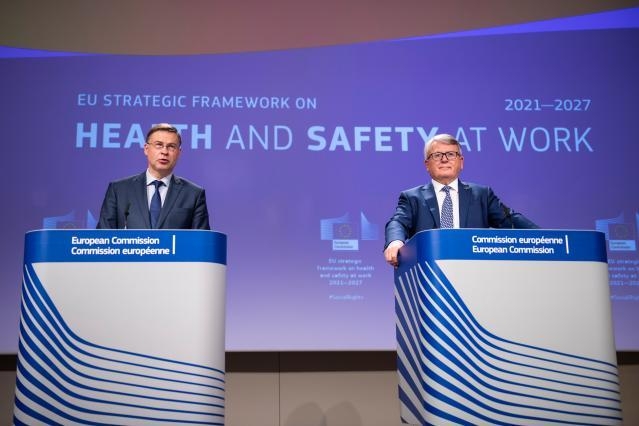
In 2018, there were more than 3,300 fatal accidents and 3.1 million non-fatal accidents in the EU. More than 200,000 workers die from work-related illnesses each year; and 3.3% of the annual GDP is used to treat work-related diseases. Although fatal accidents decreased by about 70% between 1994 and 2018, there is a need to “modernise” occupational safety and health legislation to ensure the protection of nearly 170 million workers in the EU. This is according to Vice-President Valdis Dombrovskis who has today presented, together with Commissioner Nicolas Schmidt, the “EU strategic framework on health and safety at work 2021-2027” and its three objectives: the first being to anticipate and manage change in the new world of work. The Commission will review the Workplaces Directive and the Display Screen Equipment Directive; it will propose protective limit values on asbestos and lead; and it will also prepare an initiative on mental health. According to data presented by Commissioner Schmidt, there are 48 million people who report work-related mental health problems, starting with stress (there will be a follow-up to Parliament’s proposal in this area on the “right to disconnect”). Secondly, the issue of prevention of both diseases and accidents will be addressed, with a “vision zero” approach to work-related deaths, for example, by updating rules on hazardous chemicals to combat cancer and reproductive and respiratory diseases. Finally, attention will be paid to increasing preparedness for possible future threats to health in the work environment. Now Member States are called to adapt their national strategies to the European one; furthermore, the Commission will initiate dialogue with social partners, promote awareness campaigns, and work for a better implementation and monitoring of EU legislation. EU funds will be mobilised and invested in health and safety at work.
